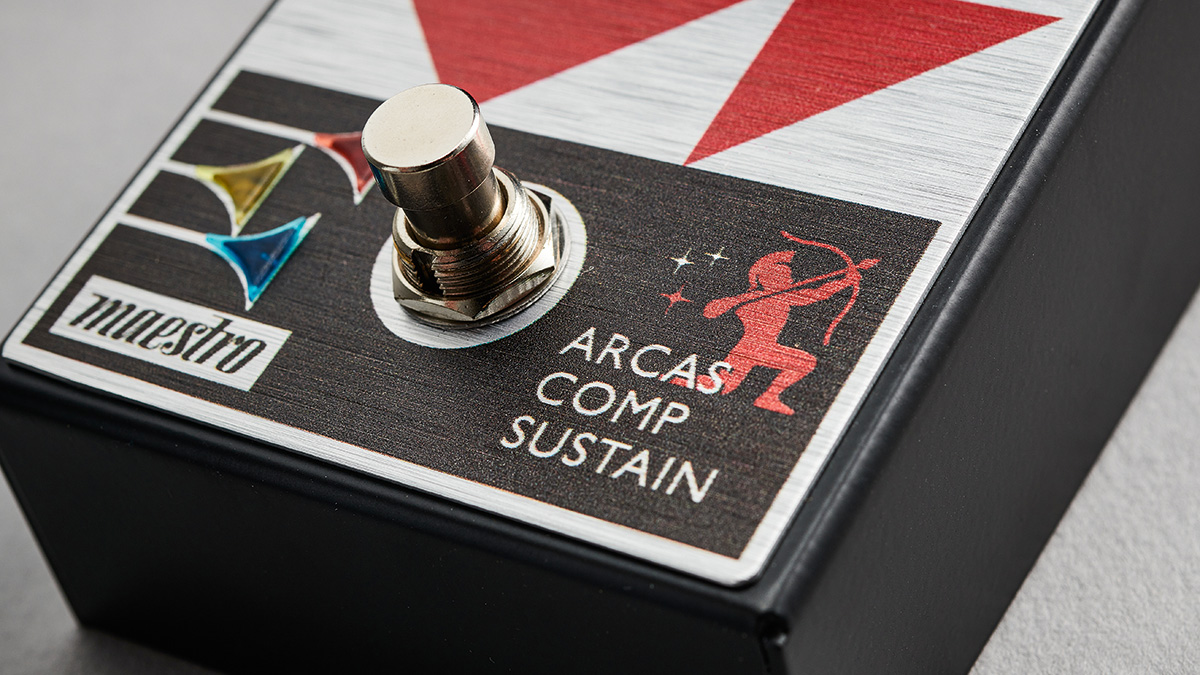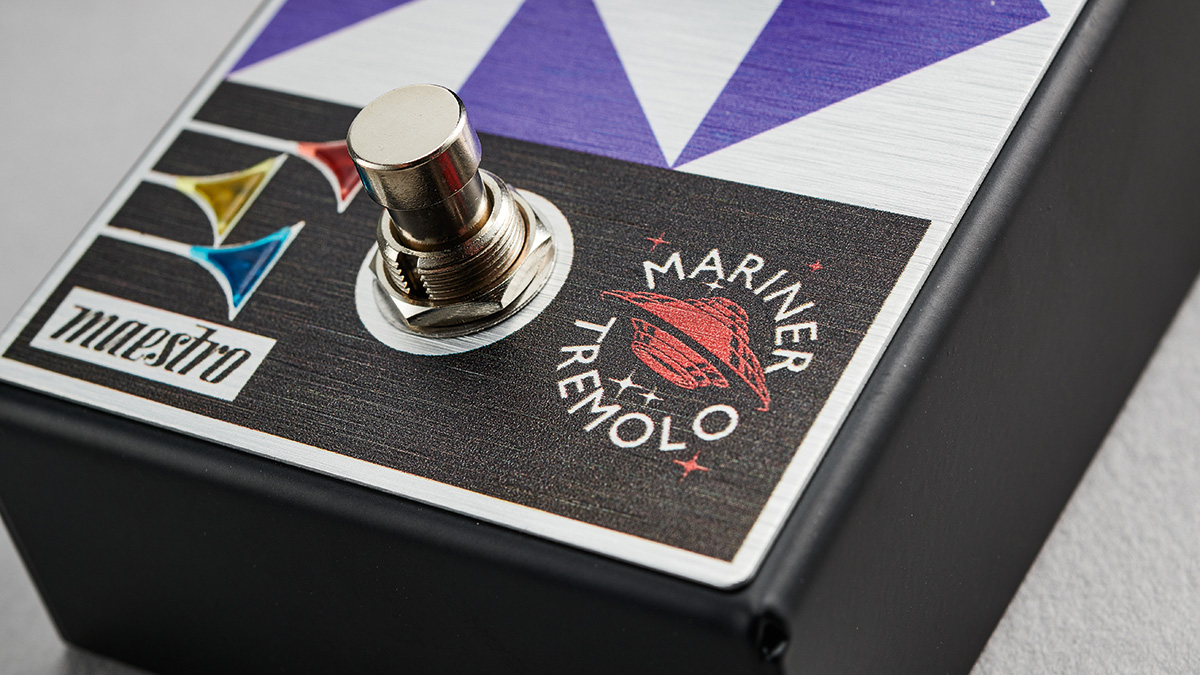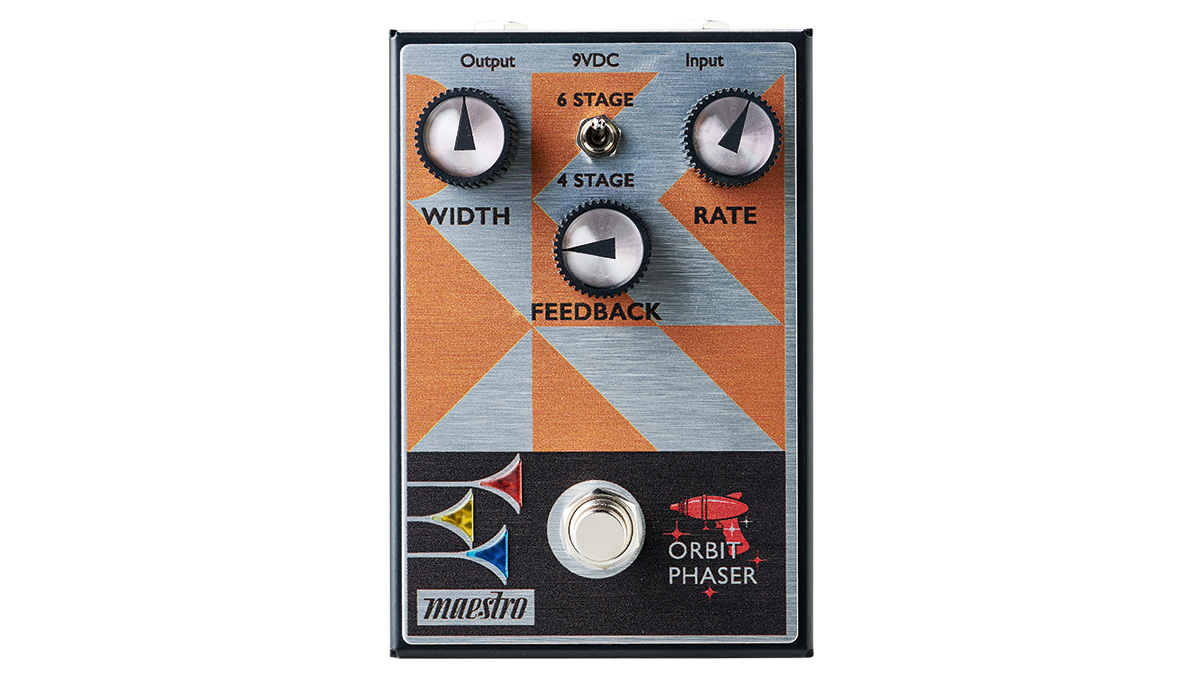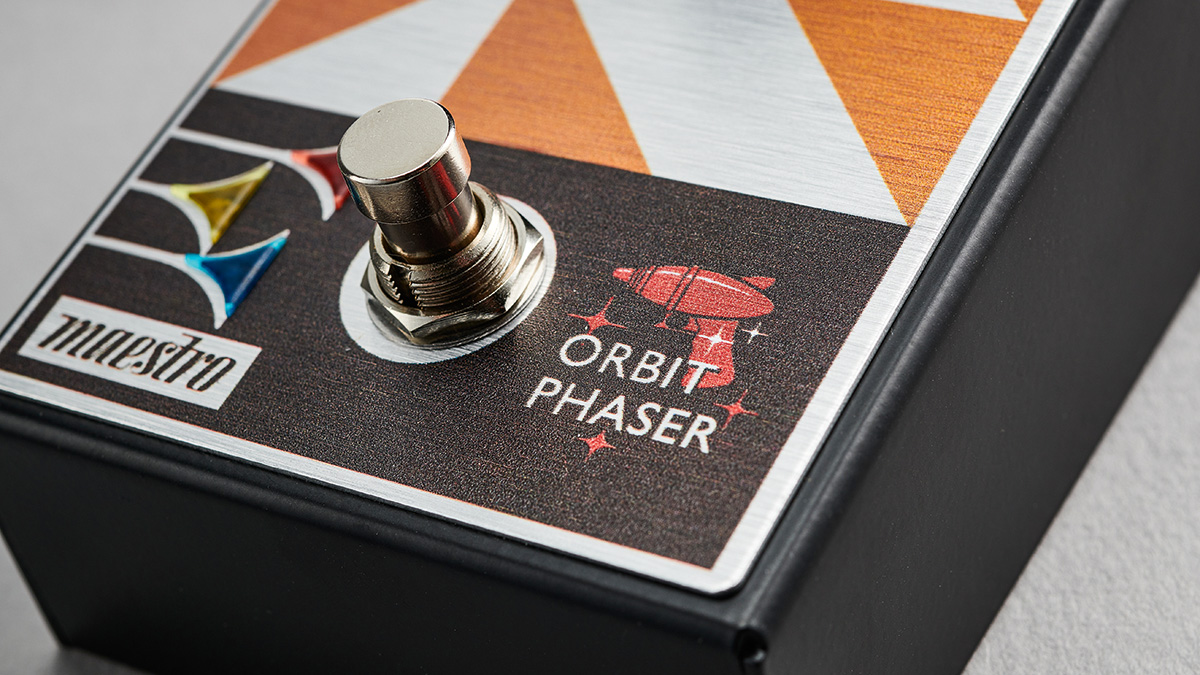Guitar World Verdict
From the tone-sweetening qualities of the Arcas to the more out there sounds of the Agena envelope filter, the second batch of Maestro pedals has something for everyone, with dual-modes making for four versatile takes on classic effects.
Pros
- +
Excellent sounds, from the practical to the wild card.
- +
Versatile set of vintage-inspired sounds.
- +
Sturdy build quality.
- +
Top-mounted sockets.
Cons
- -
On the large side.
You can trust Guitar World
Early in 2022, 60 years after the Maestro FZ-1 Fuzz-Tone was launched way back in 1962, Gibson brought its long-retired Maestro brand back to the marketplace in a big way with five pedals: the Fuzz-Tone FZ-M, Discover Delay, Comet Chorus, Ranger Overdrive and Invader Distortion.
At the time, we were hoping there would be more to come, and that hope has now become reality with the release of five more pedals. The Agena Envelope Filter, Arcas Compressor Sustainer, Mariner Tremolo, Orbit Phaser, and Titan Boost all follow the same form factor and the same distinctive geometric graphics established by those first five new Maestros and we have four of them here to take a look at.
These all-analog pedals are heavy and extremely robust with a slightly-sloping wedge-shaped enclosure, and have all their socketry at the top end so that they butt up reasonably close to each other if you fancy placing a few together on a pedalboard.
The pedals take their power from any 9V adapter or alternatively from a battery that’s accessed by loosening a couple of screws to let the hinged baseplate drop down. As delivered, each pedal will wobble slightly if placed on a hard flat surface as the two rivets holding the battery clip stand slightly proud of the baseplate, but you get a set of stick-on rubber feet in the box to solve that problem.
All are true bypass pedals and feature a three-colour Maestro bugles logo that lights up when you engage the footswitch to activate the effect.
These five pedals mirror the control surface found on the previous five which is a triumverate of knobs surrounding a two-way toggle switch that Gibson says makes them ‘two pedals in one’ by offering alternative versions of their featured effect.
Agena Envelope Filter

We might see a treadle-equipped Maestro wah pedal some day, but, keeping within the current stylistic constraints of the Maestro pedal chassis, what we do have is an envelope filter pedal that should be able to conjure up some closely related sounds without any ankle excercise. Here, the sounds are instead triggered automatically by clever electronics in response to your playing dynamics.
All the latest guitar news, interviews, lessons, reviews, deals and more, direct to your inbox!
Exactly how the pedal responds to your picking and strumming is set by the ‘Sense’ knob. At its lowest settings you have to pick the strings hard to trigger the filter but at its max setting it pretty much responds to all but the softest touch – in the arc between, there’s plenty of scope for finding a sweet spot where you can best ‘play’ the effect.

The two-in-one functionality of this pedal lies in its two distinct filter frequency options – Hi and Lo – each defining the frequency range in which the filter’s action is focused: Hi being nicely bright with Lo’s mellower range having a deeper woof that still works well with a standard six-string but could also function with lowered tunings or bass guitars.
In terms of shaping the sound, you can adjust the envelope with the Attack and Decay knobs, careful juxtaposition of the two being rewarded with a range of vowel-like wah sounds and more – you can increase the ‘quack’ of the effect with the Attack knob while the Decay knob sets how long the filter stays open. A neat effect that can add expressiveness to leads as you choose which notes to dig in on.
Specs
- PRICE: $159 / £165
- ORIGIN: China
- TYPE: Envelope Filter pedal
- FEATURES: True bypass
- CONTROLS: Sense, Decay, Attack, Hi/Lo switch, Bypass footswitch
- CONNECTIONS: Standard input, standard output
- POWER: 9V battery or 9V DC adaptor 26.6mA
- DIMENSIONS: 87 (w) x 128 (d) x 63 mm (h)
Arcas Compressor Sustainer

A touch of compression is no bad thing in a guitar signal chain, and the Arcas aims to give you that with plenty of variation. For starters, the pedal has two modes – Lo and Hi – that offer different sensitivities to pick attack.
You also get a Sustain knob that effectively turns up the amount of compression and a Level knob that adjusts the output of the pedal so you can compensate for any loss of volume during compression, or perhaps build in an outright boost. On top of those, there’s an Attack knob that sets how quickly the compressor engages.
Hi Mode is more sensitive to pick attack and gives you a sound with a real snappy transient at the start of any note that is at once brighter and louder than Lo mode, which offers a more natural start to the note envelope. In either mode, you can use the Attack knob to further shape the transient at the start of the note for more of that chicken-pickin’ snap.

The pedal admirably tackles all the tasks you’d use a compressor pedal for, offering a range of compression from a mild overlay, through keeping levels in check to aid note-to-note consistency, up to pretty squashed with a bloom which will certainly eke out the length of any sustained notes.
While the pedal could be used as something to kick in for effect, we liked it in the always-on role featuring as an integral enhancement of the signal chain with a small amount of compression – just enough for thickening and to keep a bit of consistency.
Specs
- PRICE: $149 / $155
- ORIGIN: China
- TYPE: Compressor pedal
- FEATURES: True bypass
- CONTROLS: Sustain, Attack, Level, Lo/Hi switch, Bypass footswitch
- CONNECTIONS: Standard input, standard output
- POWER: 9V battery or 9V DC adaptor 21.9mA1
- DIMENSIONS: 87 (w) x 128 (d) x 63 mm (h)
Mariner Tremolo

You rarely see just one type of tremolo in new tremolo pedals these days. Once the more mesmeric ‘Harmonic’ tremolo sound – which featured in a number of Fender amps for a short period in the early 1960s – was rediscovered and became a popular choice for players, pedal makers have been falling over themselves to include it in their designs.
So it is you’ll find it here alongside ‘Classic’ tremolo, based on a more standard amplitude tremolo. It’s not just a straight choice between two fixed sounds, though: besides the expected Depth and Speed knobs you also get a ‘Shape’ knob that lets you tweak the actual tremolo waveform in a range that runs from softer sounds right through to a harder square wave.

If you are looking for the sort of tremolo sounds found in most vintage amps, Classic mode has it covered with the Shape knob at low levels. Start moving that Shape knob clockwise, though, and the waveform starts to morph until you get into fully square wave territory and a more on/off sequencer-style effect.
Between the extremes, there’s plenty of subtlety to be dialled in when combined the broad Depth adjustment and a Speed range from a really slow pulse through to something like a Leslie speaker on its fast setting.
All of the knob action applies equally to the Harmonic tremolo, though it is quite a different effect; its woozy phasiness mixed in with the cyclic volume change gives it more of a textural aspect with more flexibility than straight tremolo.
Specs
- PRICE: $159 / £165
- ORIGIN: China
- TYPE: Tremolo pedal
- FEATURES: True bypass
- CONTROLS: Depth, Shape, Speed, Harmonic/Classic switch, Bypass
- CONNECTIONS: Standard input, standard output
- POWER: 9V battery or 9V DC adaptor 41.9mA
- DIMENSIONS: 87 (w) x 128 (d) x 63 mm (h)
Orbit Phaser

If you happened to read our review of the last batch of Maestro pedals you’d be aware that we were hoping that the company would bring out an updated version of one of their classic PS-1 phasers, the pedal that, combined with a Big Muff, provided the liquid lead sound on the Isley Brothers’ That Lady.
Well, there is a phaser among this new batch that builds on that legacy, although Maestro says it has been re-engineered and tailored to the needs of today’s players. The two-in-one function here means you have a choice of two different phasing sounds: a six-stage phaser, as found in the PS-1 series, and a four-stage phaser.

These are tweaked with Width, Rate and Feedback knobs. Kick the pedal in and it seems like you lose a bit of the top-end, the pedal focusing on the warm midrangey tones that you would find in some 1970s vintage phasers.
That treble content, though, is partly dependent on the width knob that adjusts the top-end while upping the intensity of the effect. In the four-stage mode you can get sounds reminiscent of celebrated vintage four-stage phasers like the MXR Phase 90 and, especially, the Electro-Harmonix Small Stone, which has a similar tonal profile.
Specs
- PRICE: $149 / $159
- ORIGIN: China
- TYPE: Phaser pedal
- FEATURES: True bypass
- CONTROLS: Width, Feedback, Rate, 6 Stage/4Stage switch, Bypass
- CONNECTIONS: Standard input, standard output
- POWER: 9V battery or 9V DC adaptor 27.5mA
- DIMENSIONS: 87 (w) x 128 (d) x 63 mm (h)
- CONTACT: Maestro Electronics
Maestro pedals 2022: the verdict
Round-up: which is right for you?
Here, we have a decent quartet of pedals that have plenty going for them, not least that ‘two pedals in one’ functionality and the extra flexibility it delivers. We were particularly impressed with the two sonic options provided by the tremolo and the phaser.
While the pedals are built on the sound basis of classic amplitude tremolo and four-stage phasing, it’s the addition of the more complex Harmonic tremolo and six-stage phaser that really sweetens the deal, while adjustable phaser feedback and tremolo waveform shape offer an extra layer of subtlety in shaping the sound to taste.
A one-knob compressor can sometimes do the job, but the approach of having a choice of two distinct sounds and several knobs to shape your compression makes the Arcas a practical purchase if you need workmanlike compression on your ‘board.
Probably the most specialised of the four, the envelope filter does its job with panache. Envelope filtering isn’t an effect genre that’s widely embraced, but maybe it should be. The use of it in funk is well-known, and the Agena is certainly funky, but it could equally find a role as the wild card on anyone’s pedalboard.
Alex Lynham is a gear obsessive who's been collecting and building modern and vintage equipment since he got his first Saturday job. Besides reviewing countless pedals for Total Guitar, he's written guides on how to build your first pedal, how to build a tube amp from a kit, and briefly went viral when he released a glitch delay pedal, the Atom Smasher.


